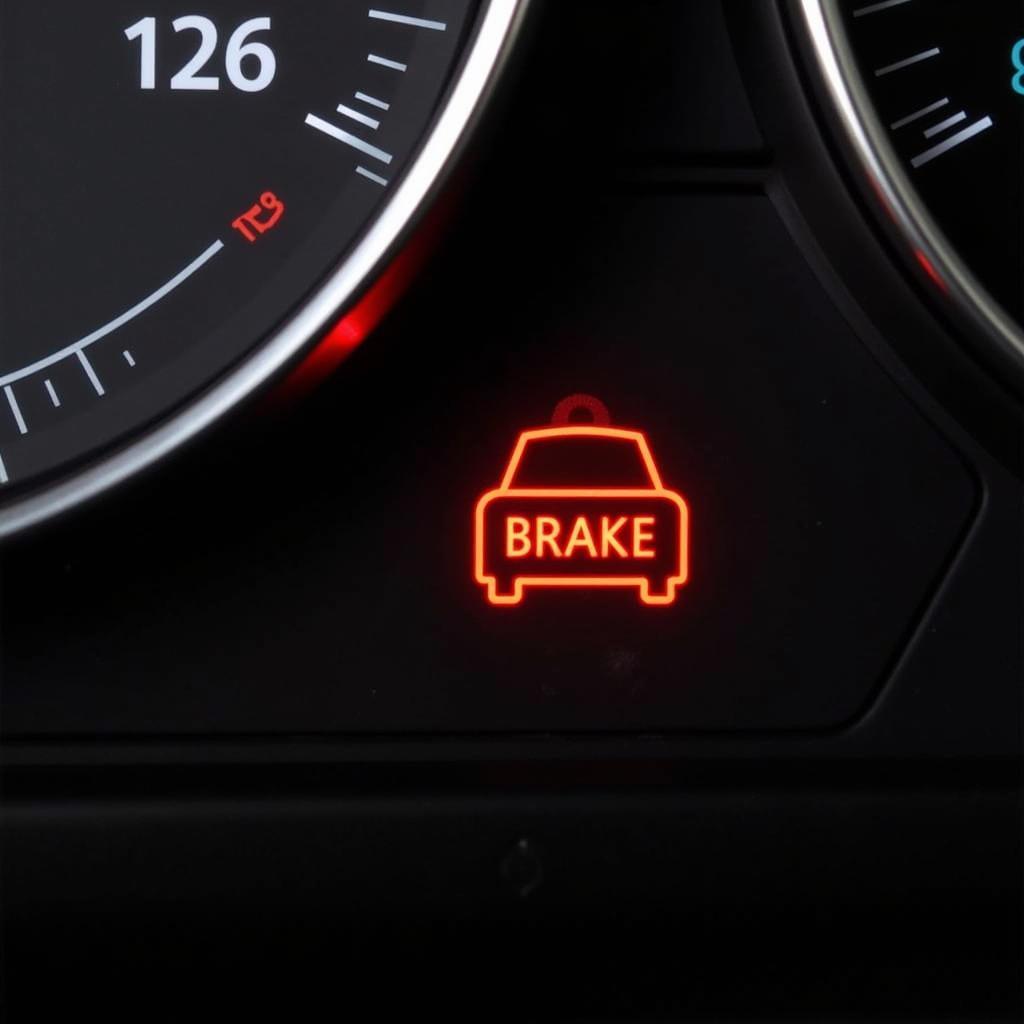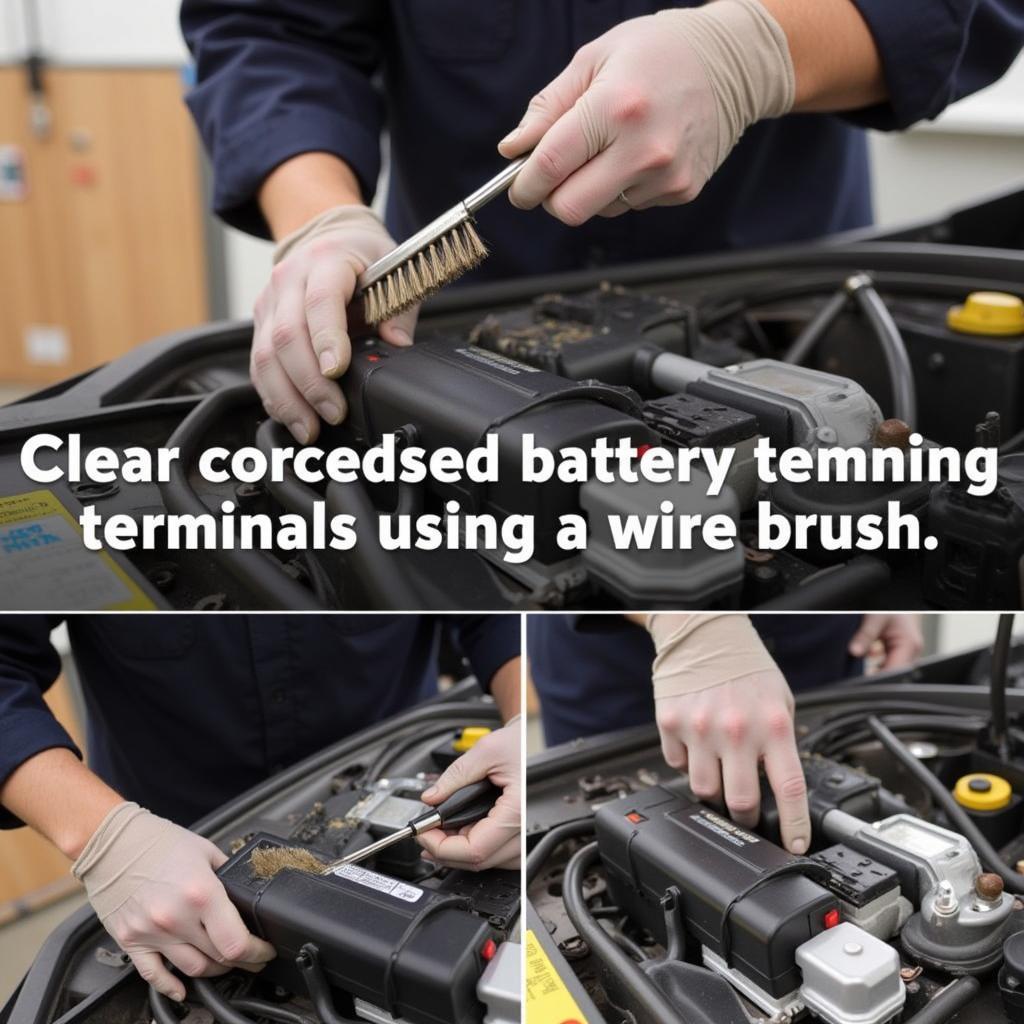The 79 Ford F150 brake warning light switch is a crucial component for your truck’s safety. A malfunctioning switch can lead to a constantly illuminated or non-functioning brake light, putting you and other drivers at risk. Understanding the causes and solutions for this issue can save you time, money, and potential accidents. This article will guide you through diagnosing and fixing problems related to your 79 Ford F150 brake warning light switch.
The brake warning light in your 79 Ford F150 is designed to alert you of potential issues within the braking system. It can indicate low brake fluid, a problem with the parking brake, or a fault with the brake warning light switch itself. A continuously lit brake light can be frustrating and concerning, but with a systematic approach, you can often pinpoint the problem and resolve it yourself.
Why is my 79 Ford F150 Brake Warning Light On?
Several factors can cause the brake warning light to stay on. One of the most common culprits is the brake warning light switch itself. This small switch, typically located near the brake pedal, can wear out or become misadjusted over time. A faulty switch can send a false signal to the dashboard, illuminating the brake warning light even when the brakes are functioning correctly.
How do I test the 79 Ford F150 Brake Warning Light Switch?
Testing the brake warning light switch is a relatively simple process. You’ll need a multimeter to check for continuity. First, locate the switch near the brake pedal. Disconnect the wiring harness from the switch. With the multimeter set to continuity, touch one probe to each of the switch terminals. Depress the brake pedal. If the multimeter beeps, the switch is working correctly. If not, you likely need a new switch. Check out our brake warning light diagram for a visual aid.
Other Potential Causes of a Lit Brake Warning Light
While a faulty brake warning light switch is a common cause, there are other possibilities to consider:
-
Low Brake Fluid: Check your brake fluid reservoir. If the fluid level is low, it could trigger the warning light. Add brake fluid as needed, but be sure to address any underlying leaks.
-
Engaged Parking Brake: Ensure your parking brake is fully disengaged. Sometimes a partially engaged parking brake can trigger the warning light.
-
Faulty Brake Lines or Calipers: A leak in your brake lines or a seized caliper can also cause problems. These issues require more advanced diagnostics and repairs. If you suspect a problem with your brake lines or calipers, consult a qualified mechanic. Learn more about 97 ford f150 brake warning for related information.
“A common mistake people make is assuming the switch is faulty without checking the brake fluid level first,” says John Miller, a certified automotive technician with over 20 years of experience. “Always start with the simplest checks before moving on to more complex diagnostics.”
Replacing the 79 Ford F150 Brake Warning Light Switch
Replacing the brake warning light switch is a straightforward task that most DIYers can handle.
-
Disconnect the Battery: Disconnect the negative battery cable to prevent any electrical shorts.
-
Locate the Switch: The switch is typically located above the brake pedal arm.
-
Remove the Old Switch: Disconnect the wiring harness from the switch. Unscrew or unclip the switch from its mounting bracket.
-
Install the New Switch: Attach the new switch to the mounting bracket and reconnect the wiring harness. You can find detailed wiring diagrams, like the 79 ford f150 brake warning light switch wiring diagram, online.
-
Reconnect the Battery: Reconnect the negative battery cable and test the new switch.
“When replacing the switch, make sure you choose the correct part for your 79 Ford F150,” advises Sarah Chen, an automotive electrical systems specialist. “Using the wrong switch can lead to further problems.” Also, consider the warner tension brake system for your specific model.
Conclusion
The 79 Ford F150 brake warning light switch is a vital component for your safety on the road. Addressing a malfunctioning switch promptly is essential to avoid potential hazards. By following the steps outlined in this article, you can diagnose and fix the issue yourself, saving time and money. Remember, a properly functioning brake system is crucial for a safe driving experience.
FAQ
- What does a constantly lit brake warning light mean? It could signal low brake fluid, an engaged parking brake, or a faulty brake warning light switch.
- How can I test my brake warning light switch? Use a multimeter to check for continuity when the brake pedal is depressed.
- Can I replace the brake warning light switch myself? Yes, it’s a relatively simple DIY task.
- Where can I find a wiring diagram for the brake warning light switch? Online resources and repair manuals often provide these diagrams.
- What should I do if the warning light remains on after replacing the switch? Check for other potential causes, such as low brake fluid or faulty brake lines.
- Is it safe to drive with the brake warning light on? It’s not recommended. Have the issue diagnosed and repaired as soon as possible.
- How often should I check my brake fluid level? It’s a good idea to check your brake fluid level at least once a month.



